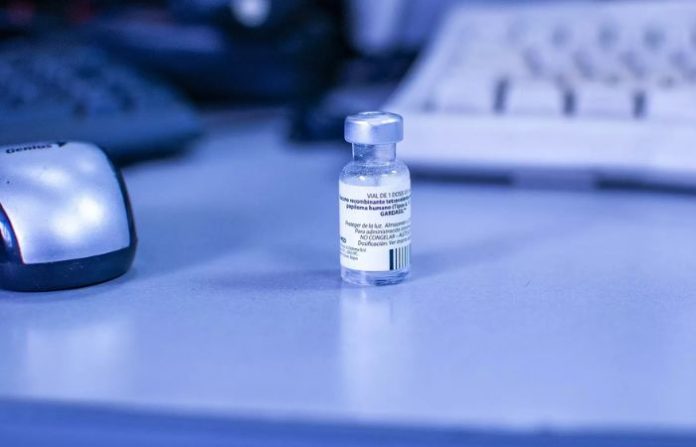What is HPV?
The human papillomavirus (HPV) is a direct contact sexually-transmitted agent. There are roughly 150 known types of HPV.1 Between 2012 and 2016, an estimated 34,800 HPV-related cancers occurred annually in the United States.1
The human papillomavirus can cause warts in the genital area, respiratory tract, and even on the hands and feet.1,2 Human papillomavirus infection is estimated to affect the majority of sexually active people.
Most HPV cases go away on their own but some can lead to warts and/or cancer.3 If preventive medical visits are routine, there is a decreased risk of developing cancer that is related to certain HPV infections.3
The following types of cancers can arise years after HPV infection:
- vulvar,
- penile
- cervical,
- and oropharyngeal (the area at the back of the throat).4
Thankfully, there are a variety of screening and prevention options and a human papillomavirus vaccine.
HPV screening
Women should undergo routine checks for cervical cancer by getting an annual Pap smear. The Pap smear involves collecting cervical cells and testing them for abnormalities that could be indicative of cancer.
During this process, an HPV test for the DNA of cancer-causing HPV may be performed.3 In Canada, HPV DNA testing is available, but may not be covered under provincial health care (OHIP).2 HPV tests for men are currently being studied.
Abnormal findings of these two exams don’t necessarily confirm a cervical cancer diagnosis. Further testing would be warranted depending on the findings.
After further testing, if cervical cancer is confirmed, treatment will be planned by the oncology (cancer) healthcare team.3
HPV vaccine
There are three human papillomavirus vaccines approved for use in Canada and the United States. Gardasil (4-valent) and Gardisil-9 (9-valent) are the most used in North America, and Cervarix (bivalent) is available for patients in Canada.2,5,6
Gardasil offers protection against the four types of HPV most likely to cause cancer and genital warts. Gardasil 9 offers added protection against five other cancer-causing types of HPV.
Both Gardasil vaccines are approved for use in men and women. Cervarix offers protection against the two types of HPV that are most likely to cause cancer and is approved for use in women.2
In Canada, the vaccines are approved for women aged 9 to 45 years and men aged 9 to 26 years. The vaccinations typically involve three separate doses.2 In the United States, vaccination is recommended for those aged 9 to 26 .5
While the vaccine is safe for use in adults older than 26, people in this age group are more likely to have already been exposed to HPV.
Important to note is that even though one may have already contracted the virus or is immunized, the risk of HPV infection increases with each new sexual partner.5
Thus, it is never a bad idea to play catch up with HPV vaccination if recommended by your doctor. The vaccines will not cause an HPV infection.
Rigorous testing has proven that these vaccines are safe and cause minimal side effects. Additionally, the vaccines will not aggravate existing HPV infections.2
Putting it all together
There are options to protect us from the human papillomavirus and HPV-related cancers. Even though the vaccines are protective against certain types of HPV, it’s important to remember that they don’t protect against all cancer-causing types.
Thus, routine screening and safe sex practices are crucial.
We encourage you to speak to your healthcare provider to find out what’s best for you.
References
- Centers for Disease Control and Prevention. Human papillomavirus (HPV) infection – STI treatment guidelines. Published July 22, 2021. https://www.cdc.gov/std/treatment-guidelines/hpv.htm.
- Public Health Agency of Canada. Human papilloma virus (HPV). Published October 4, 2017. https://www.canada.ca/en/public-health/services/diseases/human-papillomavirus-hpv.html.
- American Cancer Society. Screening tests for cervical cancer. Published January 13, 2023. https://www.cancer.org/cancer/cervical-cancer/detection-diagnosis-staging/screening-tests.html.
- Centers for Disease Control and Prevention. STD Facts – Human papillomavirus (HPV). Published April 12, 2022. https://www.cdc.gov/std/hpv/stdfact-hpv.htm.
- American Cancer Society. Screening tests for cervical cancer. Published January 13, 2023. https://www.cancer.org/cancer/cervical-cancer/detection-diagnosis-staging/screening-tests.html.
- Centers for Disease Control and Prevention. Vaccine information statement: Recent and upcoming changes. Published November 16, 2022. https://www.cdc.gov/vaccines/hcp/vis/what-is-new.html#:~:text=Note%20that%20the%20VIS%20no,sold%20in%20the%20United%20States.
- Centers for Disease Control and Prevention. Human papillomavirus vaccination for adults: Updated recommendations of the advisory committee on immunization Practices. Published August, 2019. https://www.cdc.gov/mmwr/volumes/68/wr/mm6832a3.htm



